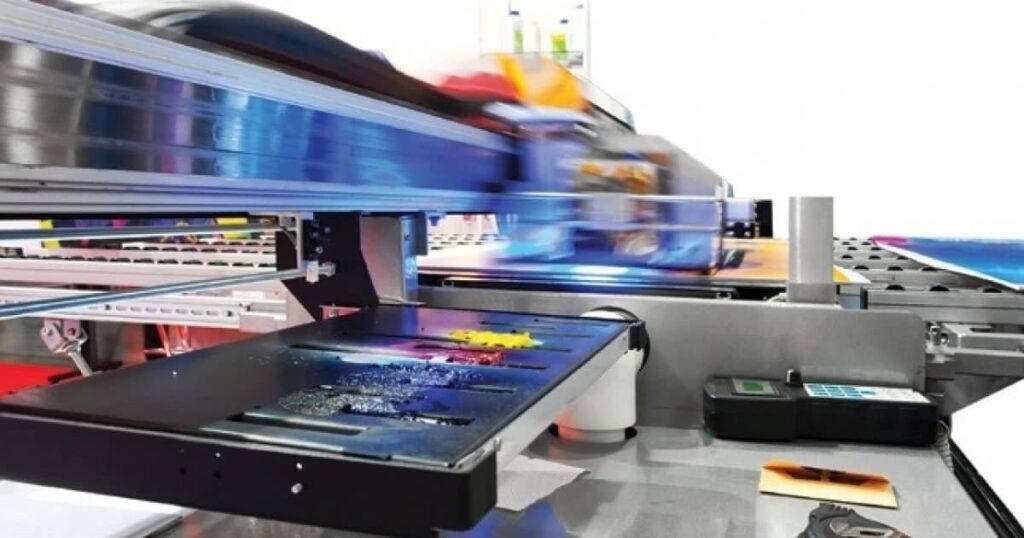UV Lack constitutes a high-gloss protective finish that is cured by ultraviolet (UV) radiation. It is sometimes referred to as a UV paint or UV varnish. Because it adds remarkable sheen, durability, and resilience to wear and tear, this contemporary coating process is used in a variety of industries, notably printing, packaging, woodworking, and automotive.
Even though UV Lack produces a sophisticated and polished appearance, inadequate environmental control or incorrect application can result in obvious flaws like bubbles that are larger inadequate coating, or cracks. We will go over what UV Lack is, typical problems you could run across, and workable fixes to get perfect outcomes in this article.
What Is UV Lack?
Surfaces such as the surface, wood, plastic, and metal can be coated with a liquid-based substance called UV Lack, which cures instantaneously when exposed to UV light. The coating is hardened during the curing process, producing a silky, bright and shiny, and protective finish that improves the material’s endurance and aesthetic appeal.
A correctly applied UV coating offers several advantages, such as:
- Improved color depth and shine
- Enhanced ability to withstand chemicals, dampness, and scratches
- Better surface protection and a longer product life
- Preferably, look for materials that are printed and coated.
There are various varieties of UV Lack depending on the finish that is desired:
- Gloss UV Lack: Provides a gleaming, reflective surface ideal for luxury packaging or promotional products.
- Matte UV Lack: Produces a gentle, non-reflective coating ideal for a more refined or understated appearance.
- Spot UV Lack: For visual contrast, this technique is used to draw attention to particular design elements, including text or logos.
Common Problems with UV Lack (and How to Fix Them)
1. Streaks or uneven coating
Cause: Surface tension problems, improper viscosity, or irregular roller pressure. Fix:
- Use a control system to maintain the right coating viscosity.
- To avoid accumulation, clean rollers on a regular basis.
- Before applying, ensure that the surface is level and clear of dust.
2. Pinholes or bubbles
Cause: During mixing or curing, air gets trapped in the coating. Fix:
- Before application, degas the coating.
- To minimize air entrapment, lower the roller speed.
- Modify the UV lamp’s intensity because too much light can quickly “trap” air.
3. Inadequate Adhesion
Cause: Incompatible materials, inadequate pre-treatment, or surface pollution. Fix:
- Use isopropyl alcohol to thoroughly clean the surface.
- Use an adhesion promoter or primer that is appropriate for your substance.
- Make sure the coating is completely dry because adhesion is weakened by undercuring.
4. Gradual Yellowing
Cause: UV radiation exposure or subpar resins used in the recipe. Fix:
- Make use of UV resins with integrated stabilizers that do not yellow.
- Do not overcure when exposed to too much UV light.
- Keep completed goods out of direct sunshine.
5. Peeling or cracking
Cause: Problems with substrate elasticity, heavy coating layers, or overcuring. Fix:
- Use many passes to apply thinner coats.
- Optimize conveyor speed and UV lamp intensity.
- For materials that can be bent, use a UV Lack formulation that is flexible.
Expert Advice for Optimal UV Lack Application
Keep the space tidy and at a consistent temperature (20–25°C). For uniform curing, set and service UV lamps regularly. Prior to bulk production, always conduct tests on tiny samples. To avoid thickening or early curing, keep UV Lack in a cold, dark location.
Conclusion
UV Lack gives any surface unparalleled gloss, protection, and expert quality when applied properly. A smooth, long-lasting, and appealing finish can be regularly achieved by recognizing and resolving the most frequent issues, such as bubbles and yellowing.
Understanding how to apply UV Lack is essential for creating faultless results that improve the look and durability of your products if you are involved in printing, hardwood finishing, or industrial coatings.



